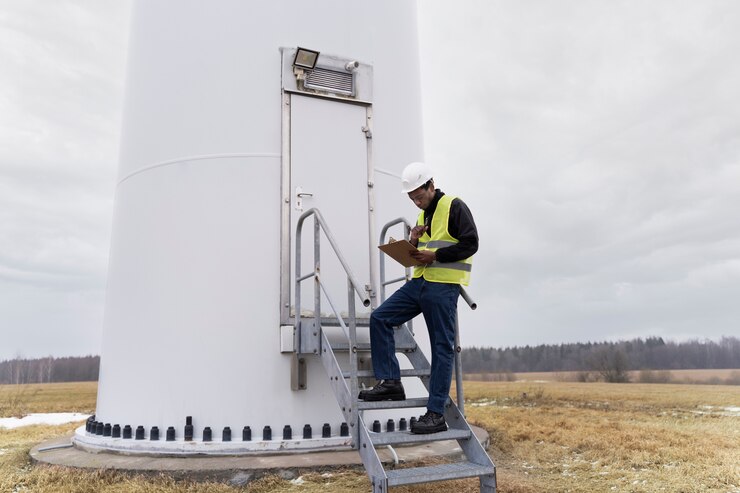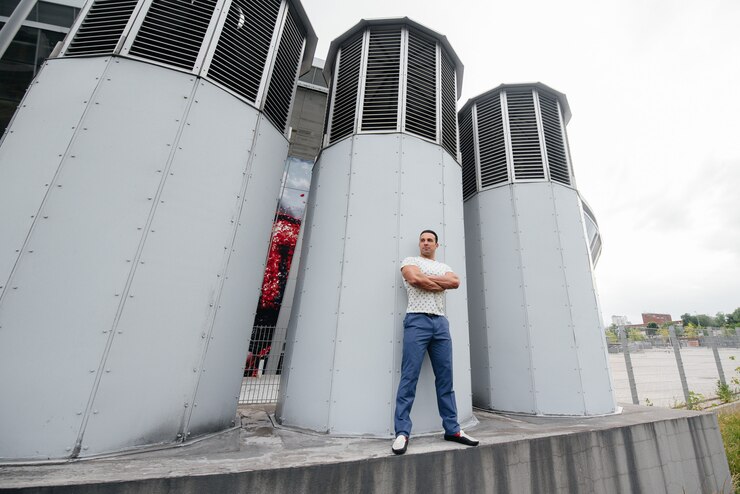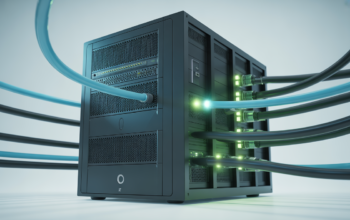A “Comprehensive Guide to Effective Cooling Tower Cleaning” covers essential maintenance practices to ensure cooling tower efficiency and longevity. It highlights the importance of regular cleaning to remove debris, scale, and biofilms that hinder performance and increase operational costs. The guide outlines identifying signs for necessary cleaning, essential tools and equipment, and step-by-step cleaning processes. It details chemical and physical cleaning methods to address mineral deposits and biological growth. Following such a guide ensures optimal heat transfer, reduced energy consumption, and minimized health risks associated with cooling towers.
Introduction To Cooling Tower Cleaning
Cooling tower cleaning is a vital maintenance practice for ensuring the efficient operation and longevity of cooling systems used in various industries. Cooling towers play a crucial role in heat dissipation, essential for maintaining the optimal performance of industrial processes and HVAC systems. Over time, these towers accumulate debris, scale, biofilms, and other contaminants that can hinder their efficiency. Regular cleaning is necessary to remove these deposits, maintain water quality, and prevent the proliferation of harmful microorganisms. By understanding and implementing effective cleaning practices, industries can enhance the performance and reliability of their cooling towers.

The Importance Of Regular Cooling Tower Cleaning
Regular cleaning of cooling towers is essential for several reasons. First, it helps maintain optimal heat transfer efficiency by removing deposits that can insulate heat exchange surfaces. This, in turn, reduces energy consumption and operational costs. Second, regular cleaning prevents the buildup of scale and corrosion, which can damage the structural integrity of the tower and its components. Third, cleaning helps control biological growth, such as algae, bacteria, and fungi, which can form biofilms and pose health risks, including outbreaks of Legionnaires’ disease. Consistent maintenance and cleaning schedules are crucial for ensuring the safe and efficient operation of cooling towers.
Identifying Signs That Your Cooling Tower Needs Cleaning
Recognizing the signs that a cooling tower requires cleaning is critical for timely maintenance. Common indicators include a noticeable decrease in cooling efficiency, increased energy consumption, and higher operational costs. Visible signs of scale, rust, or biofilm on surfaces and components also signal the need for cleaning. Additionally, unpleasant odors, changes in water quality, and frequent equipment malfunctions or breakdowns are telltale signs that the cooling tower is overdue for cleaning. Regular inspections and monitoring of key performance metrics can help identify these issues early and ensure prompt corrective action.
Essential Tools And Equipment For Cooling Tower Cleaning
Effective cooling tower cleaning requires the right tools and equipment. Essential items include high-pressure water jets or power washers for removing debris and scale from surfaces. Brushes and scrapers are useful for manual cleaning of hard-to-reach areas. Chemical cleaning agents, such as descalers and biocides, are necessary for dissolving mineral deposits and controlling biological growth. Personal protective equipment (PPE), including gloves, goggles, and respirators, is crucial for ensuring the safety of personnel during cleaning operations. Additionally, vacuum systems and filtration units can help remove sludge and other accumulated materials from the cooling tower basin.
Step-By-Step Cooling Tower Cleaning Process
The cooling tower cleaning process involves several key steps to ensure thorough and effective maintenance. First, the system must be shut down, and safety protocols should be followed to protect personnel. Draining the tower is the next step, allowing access to internal components. Physical cleaning involves using high-pressure water jets, brushes, and scrapers to remove debris, scale, and biofilm. Chemical cleaning agents are then applied to dissolve mineral deposits and disinfect surfaces. After cleaning, the tower should be thoroughly rinsed and refilled with fresh water. Finally, a comprehensive inspection ensures that all components are clean and in good working condition.
Chemical Cleaning Methods For Cooling Towers
Chemical cleaning methods play a crucial role in the maintenance of cooling towers. Descaling agents are used to dissolve mineral deposits, such as calcium carbonate, that accumulate on heat exchange surfaces. Acid-based cleaners are often effective for this purpose but require careful handling due to their corrosive nature. Biocides are essential for controlling the growth of algae, bacteria, and fungi, preventing biofilm formation and reducing health risks. It is important to select the appropriate chemical agents based on the specific contaminants present and to follow manufacturer guidelines for safe and effective application.
Physical Cleaning Techniques For Cooling Towers
Physical cleaning techniques are essential for removing visible debris, sludge, and scale from cooling tower surfaces and components. High-pressure water jets or power washers are commonly used to dislodge and remove accumulated materials. Brushes and scrapers can help clean hard-to-reach areas and stubborn deposits. Vacuum systems are effective for extracting sludge and sediment from the basin. Manual cleaning methods, while labor-intensive, provide a detailed approach to ensure that all areas of the cooling tower are thoroughly cleaned. Combining physical cleaning with chemical treatments enhances overall effectiveness and ensures comprehensive maintenance.
Conclusion
Regular and thorough of cooling tower cleaning is crucial for maintaining their efficiency, reliability, and safety. By understanding the importance of cleaning, recognizing signs of contamination, and utilizing the right tools and techniques, industries can ensure the optimal performance of their cooling systems. Chemical and physical cleaning methods, when used in combination, provide a comprehensive approach to removing deposits, controlling biological growth, and preventing corrosion. Regular maintenance schedules and prompt corrective actions are essential for preventing costly repairs, reducing energy consumption, and extending the lifespan of cooling tower components. Investing in effective cleaning




